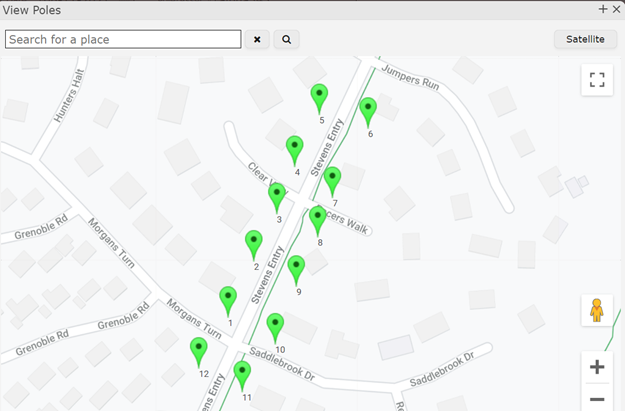Integrating your Joint Use System with NJUNS

The massive increase in broadband pole attachments puts a lot of responsibility on pole owners. You need to track the details of every request while ensuring projects continue moving forward in a timely fashion. Fortunately, the National Joint Utilities Notification System, or NJUNS, provides utilities with a helpful tool.
NJUNS is a not-for-profit cooperative of pole owners and attachers, with software built to track workflows and notifications between attachers and pole owners. Manually entering data into both NJUNS and your internal joint-use management system can be error-prone and time-consuming. NJUNS has an API specifically designed to support system integration.
This post explores how to integrate a joint use system with NJUNS and the benefits you as a pole owner receive when you integrate.
Let attachers utilize your existing pole data
The first step to NJUNS integration is uploading all pole data to the NJUNS database.
In the past, when creating pole attachment request tickets in NJUNS, users manually input their desired pole numbers, latitudes, and longitudes. Pole owners were responsible for verifying or reconciling that pole data against their joint use records. This process was time-intensive and became very laborious if the user inputted an incorrect pole number, if the pole number was not unique, or if the GPS coordinates didn’t match.
NJUNS now offers pole owners the ability to upload pole data from their GIS or joint use system. By implementing this function, users can quickly select the poles they wish to create tickets for on a map and feel confident that the pole data is correct.

How NJUNS integration can work with your joint use system
With the support of a knowledgeable programmer, the NJUNS REST API can be invoked and integrated with your internal systems. If you’re an NJUNS member, you can request a copy of the API documentation from them. Please note that you’ll need to build your custom code to interface with the NJUNS API framework. The diagram below is an example of a data flow for pole attachment request integration.

- First, an attacher submits a pole attachment ticket to the pole owner in NJUNS.
- Via the NJUNS API, the ticket is automatically sent to the pole owner’s joint use management system. From here, you can develop tracking milestones that suit your workflow, and you will receive notifications if any ticket updates occur.
- You can push ticket updates from your joint use system to NJUNS so that attachers will see the updates.
- You can view your pole and attachment data from NJUNS without performing duplicate data entry. You’ll see requests on a map, examine pole inspection details, and view active applications or work on a given pole.
- Once attachers receive your approval to attach, you can seamlessly migrate permit and attachment details into your joint use system, making future billing easier and completely accurate.
- Attachment records associate with the correct pole with no additional effort.
Joint Use 365 is designed for NJUNS integration
While NJUNS can be custom integrated with other asset and work management systems, Joint Use 365 has a built-in NJUNS integration module. Varasset built the NJUNS software platform and Joint Use 365, making us uniquely qualified to securely, reliably, and quickly interface with NJUNS.
Joint Use 365’s NJUNS add-on can:
- Streamline and automate your permitting process
- Reduce “swivel chair” duplicate data entry
- Enable attachers to enter their permit request data
- Allow attachers to see your pole data, eliminating “which pole” questions
- Give your attachers real-time online access to permit status, significantly reducing phone calls and emails
With data secured behind your Azure Cloud infrastructure and Active Directory login, your joint use data will always be available, whether you’re in the office or the field.
Are you ready to upgrade your NJUNS usage? Please watch our introductory video here, view our pricing page for license and implementation information, or contact us to schedule a demo.

